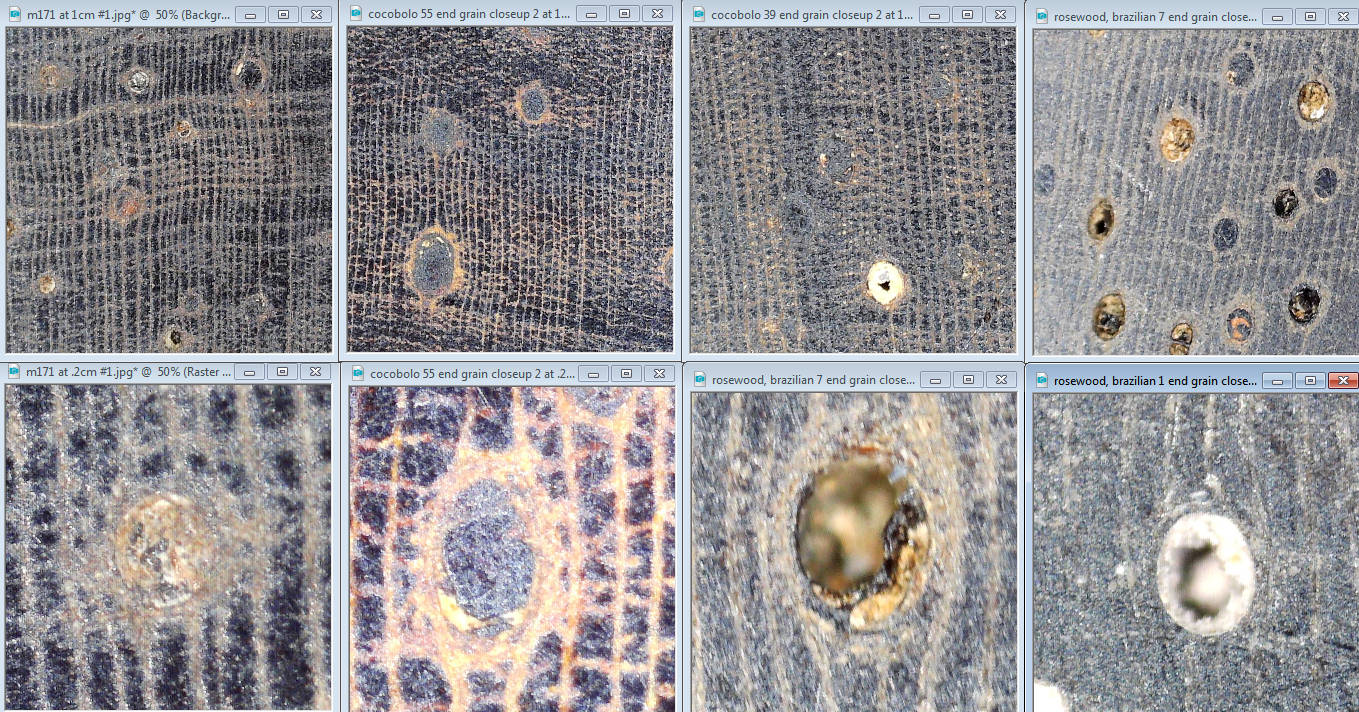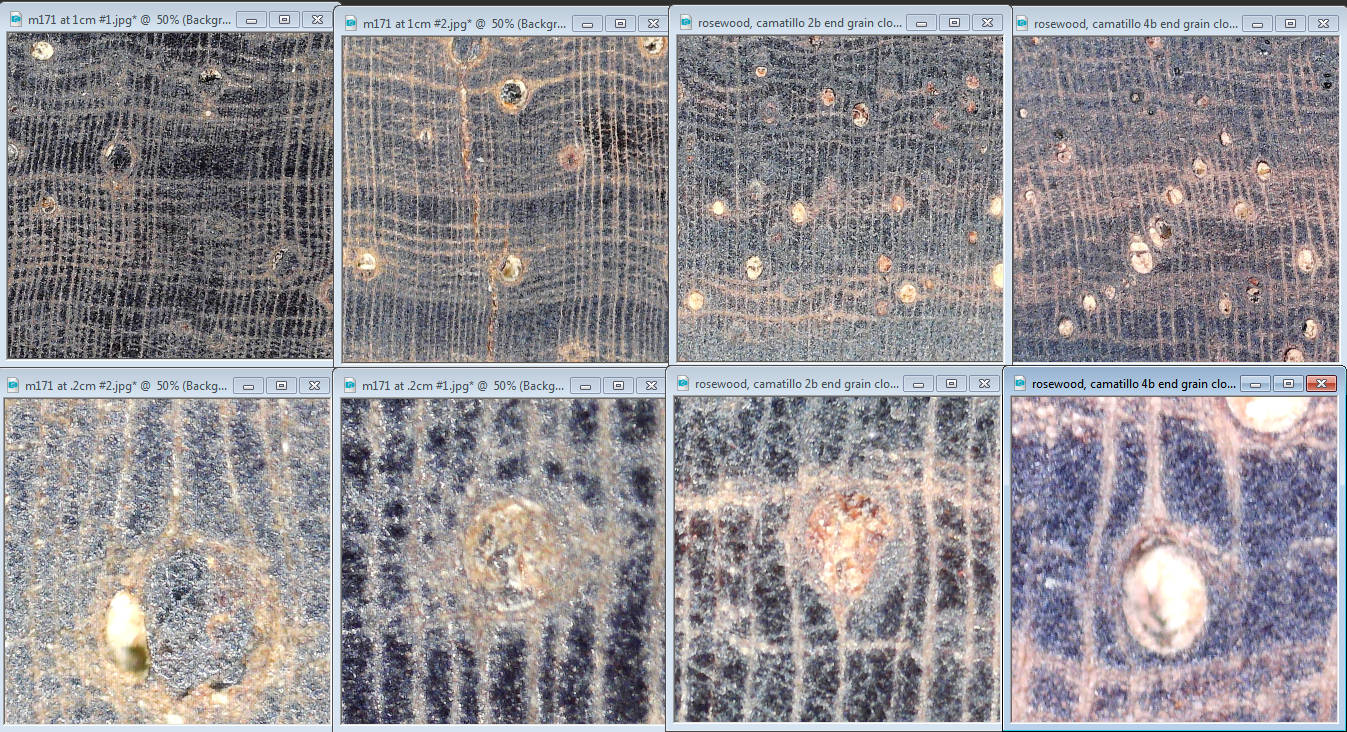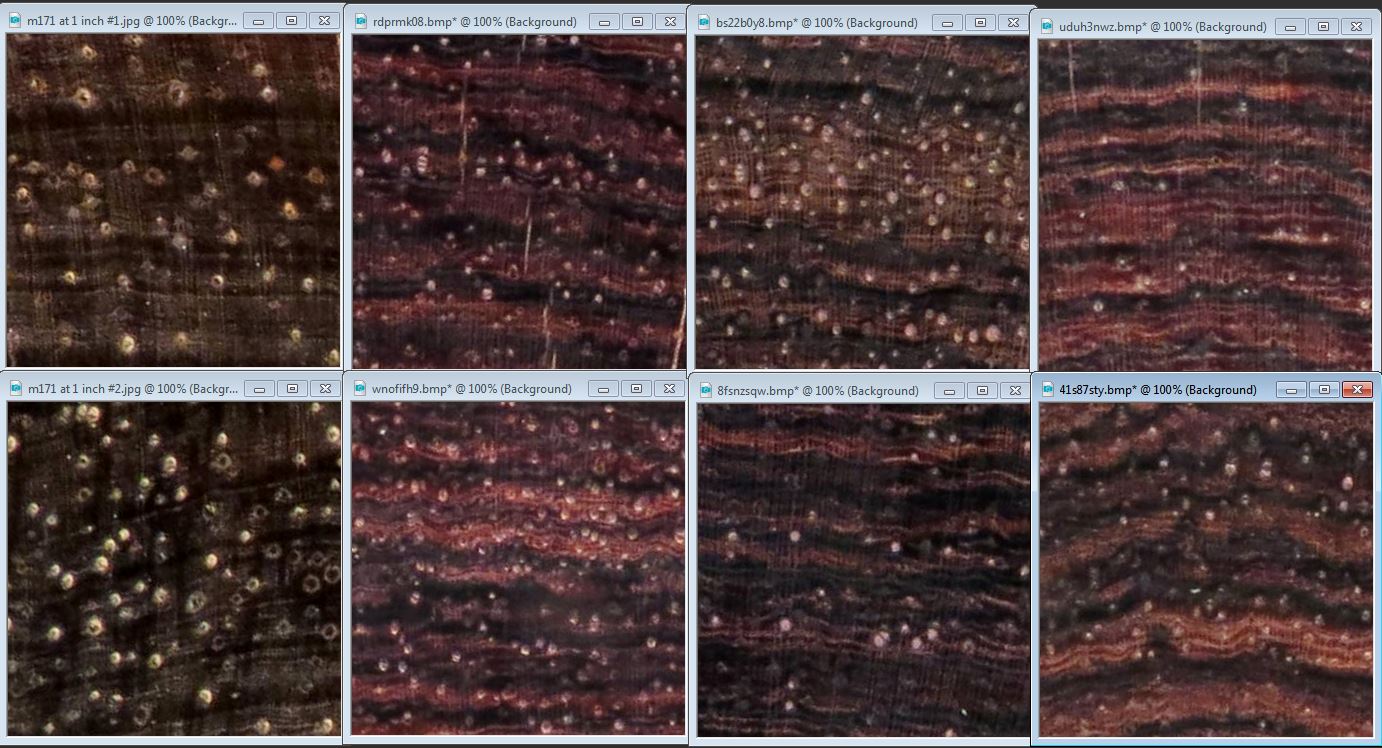#171 additional info
This is the supporting info for my conclusion that for those rosewoods for which I have a sufficient number of samples with which to make comparisons, M171 shows real similarity only to cocobolo, Brazilian rosewood, and camatillo rosewood, and that of those three it shows the most similarity to cocobolo. I'm not going to show the dozens of images that it would take to demonstrate that M171 is not similar to any of my other rosewood samples; you'll have to take my word for that.
As stated on the main mystery wood page, the owner now has some reason to believe that this is Brazilian rosewood.
This is NOT a definite conclusion that M171 is cocobolo but it's as close a match as I can find.

- "CO" = cocobolo and "BR" = Brazilian rosewood shown here about 12X
- all of these are my normal 1/4" square closeups of fine-sanded end grain
- all of these are at least somewhat similar but to my eye the cocobolo is the best match for M171, although it's a close call.
- pores are generally smaller than the BR but about the same as for cocobolo
- pore density is greater than the BR but about the same as for cocobolo
- the horizontal stripes (technically, the banded or diffuse in aggregate parenchyma) seem to be a bit of a closer match with cocobolo than BR
- See the next set below for more definitive (but not absolutely definitive) confirmation of cocobol being the better match

- each square has a label at the top
- the top row images are all one-tenth of an inch square
- the bottom row images are all approximately two-hundredths of an inch (.05cm) square
- this shows pretty clearly why I think cocobolo is a better match (but not a perfect match) for M171 than is Brazilian rosewood. Here are comparison points between cocobolo and M171:
- the pores are about the same size although cocobolo's are sometimes bigger
- the vasicentric parenchyma has about the same thickness (but that's also true of the BR)
- the rays are about the same thickness
- the ray spacing is a very close match
- the horizontal stripes (technically, the banded or diffuse in aggregate parenchyma) are about the same

- each square has a label at the top
- the top row images are all one-tenth of an inch square
- the bottom row images are all approximately two-hundredths of an inch (.05cm) square
- When I looked at these (before I looked at the next set below) I thought that there was at least a chance this might be camatillo rosewood even though I have never seen that wood with the almost solid black face color of M171

- all of these are my normal 1/4" square closeups of fine-sanded end grain
- the left-most image in both rows show an area of M171 and all of the rest of the images are Camatillo rosewood
- I think you can see from this why I say camatillo rosewood is an unlikely match for M171
- camatillo pores are generally smaller than in M171
- camatillo pore density is noteably greater than M171
- camatillo pores have thinner vasicentric parenchyma than M171
- the camatillo has more color variegation.
- the camatillo has much more of the horizontal stripes (technically, the banded or diffuse in aggregate parenchyma) than M171



